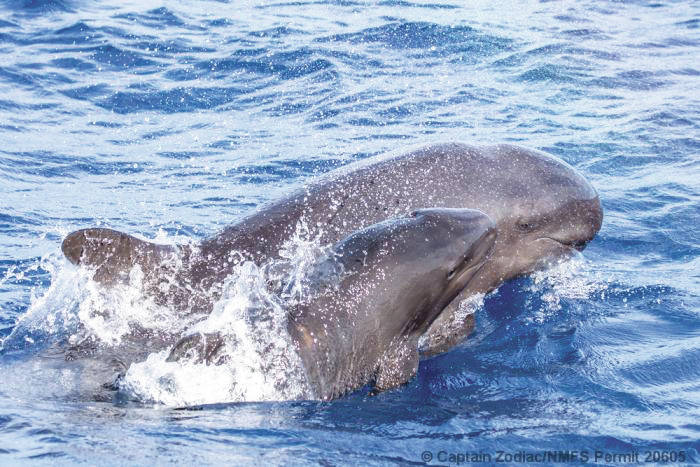Around the world, scientific research has been put on hold since the start of the coronavirus pandemic. For one team of researchers in Hawaiian waters however, the summer of 2020 has proven to be an especially productive time.
A unique partnership between marine biologist Dr. Robin Baird at Cascadia Research Collective and Colin Cornforth – the owner of Kona tour company Captain Zodiac – has ensured their summer field project has had a fruitful 21st year.
“Due to COVID, pretty much all of NOAA’s and federal agencies’ research has been shut down,” said Cornforth. “Since I had this unique opportunity working directly underneath Robin – I’ve been on his permit for about five years – NOAA gave me the go-ahead to continue conducting some research in the time of the shutdown.”
While COVID restrictions prevented Baird and some members of his team from making the trip to Hawaii to conduct research, Cornforth was able to assemble an experienced team locally. With his team, the project was able to carry on the work in tagging, getting biopsies and photo identification of pilot whales around Hawaii. Back in Washington, Baird’s team uses the collected data to estimate populations, look at movement patterns and examine the genetics of certain species and more.
“It’s been a very different approach; a smaller team with still a lot of capabilities,” said Baird of the team in Kona. “We use a lot of different types of techniques and some of the team members have very specialized skill sets.”
The project’s biggest focus has been to gather information and data regarding false killer whales. Though the insular false killer whales found exclusively in Hawaiian waters are endangered, with a population estimate of fewer than 200, much less is known about the pelagic false killer whales found across the globe.
“Unlike the pelagic false killer whales, we actually do have a reasonable likelihood of seeing the insular ones,” said Baird. “We know where they like to spend their time and often focus our field efforts in those areas.”
This made an encounter early in the summer, when Cornforth and his team were able to tag a pelagic false killer whale for the first time since 2013, extra special.
“I’m actually getting chicken skin thinking of it right now…” Cornforth said. “We had a 17-day tag that lasted on that animal. It swam well north, came across Lanai, south of Oahu, went north of Kauai and then continued on a track 350 miles north of Oahu before the tag stopped transmitting.”
“We don’t see the pelagic false killer whales very often, and tag them even less often,” Baird added. “The fact that they found them was amazing and the fact that they were able to get a tag out was really outstanding…Those days end up being extremely productive.”
The encounter with pelagic false killer whales was not the lone meeting the team had with a unique species. Over the course of the summer, Cornforth and his colleagues documented more than a dozen species found primarily in deep water, including rarer species like Risso’s dolphins, Fraser’s dolphins and Cuvier’s beaked whales.
“In any one day out on the water, there may be two or three encounters, but those are typically with two or three different species,” Baird said. “The next day, there may be two or three encounters, but they may be two or three different species than the ones seen on the first day. It reflects that Hawaiian waters are home to a really high diversity of dolphins and whales.”
“Every time that we had an encounter, I had to remind my crew I’ve been on the water 17 years here and spent the vast majority running tours – that we were unbelievably fortunate because there might be a possibility that we’ll never get a chance to see these animals again,” Cornforth added.
Both Cornforth and Baird brought up how crucial they feel conservation is in Hawaiian waters, with Baird noting how much the team welcomes input from citizen scientists.
“Folks who either work on the water or play on the water that take cameras out with them, those photos end up being invaluable for a lot of different types of analyses,” said Baird. “It would be great to hear from them and see whether or not they’re species that we’re working with and might be able to contribute those to the research efforts.”
Any citizen scientists who are interested in contributing to Cascadia’s project can send their photos of pilot whales to Baird’s team at hawaii@cascadiaresearch.org.
For Cornforth, just having the ability to continue being on the water contributing to science has been a reward in and of itself.
“With the world being shut down, it feels really good to keep a lot of people focused an contributing to some really good things for marine mammals here in Hawaii,” Cornforth said. “We’re just blessed. I can’t say it any other way.”




